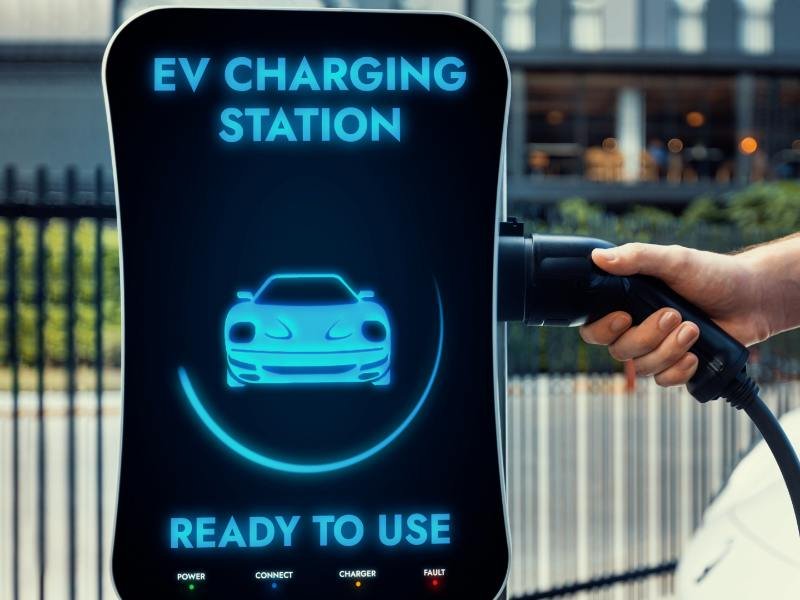

Image credit: 123rf.com
Industries are injecting vast amounts of money into EV charging stations to take advantage of the growing number of EV vehicles.
EV chargers use immense power; writes Ijlal Ullah Khan, analyst at PTR Inc. thus, installing them on-site could strain the property’s electrical system.
And electricity supply and power loads are generally overlooked unless there is an incident.
However, power is essential to any EV charging infrastructure as a standard AC charging station consumes between 7.4 and 22 kW, depending on the model. As power is necessary for EV charging infrastructure, it is crucial to implement EV charging strategies that minimize incidents and prolong existing grid infrastructure.
With the growing number of EV charging stations worldwide, it is vital to adopt load management strategies specific to location requirements to ensure the most efficient charging of EVs.


EV charging load management requires finding the right balance between daily energy requirements.
Load management optimizes EV charging and reduces grid load by minimizing energy usage during peak demand hours.
On a grand scale, it creates power demand equilibrium across numerous sites, such as individual charging ports, fleet depots, residential buildings, and public parking lots. On a small scale, load management adjusts the charging schedule for a single charge point to a time when energy is affordable.
When several charging stations are in use, load management ensures harmonious power distribution, leading to vehicles being charged efficiently.
There are three load management techniques: unmanaged charging, static, and dynamic load management.
Unmanaged charging
There is no active management of charging loads in unmanaged charging. Due to a lack of control, EVs can charge at full power, leading to high energy peaks and potential blackouts. This unmanaged charging method is only suitable for places with fewer charging points.


Source: GridX
Static load management
Static load management is a simple but rigid approach to managing electricity. It divides the total available grid capacity into set portions for base load and EV charging.
However, it is ineffective in certain situations because it does not adjust to real-time load fluctuations. The best places to incorporate static load management are sites with stable base load.


Have you read?
Partnership to settle grid imbalance with EV charging platform
EV adoption is accelerating, but could lingering doubts hamper growth?
Dynamic load management (DLM)
Dynamic load management is the most advanced and flexible load management method. It continuously adjusts EV charging capacity based on real-time grid conditions and optimizes charging power without causing unnecessary peaks or overloads.
Moreover, this method allows more charge points to operate on existing grid infrastructure without needing a significant upgrade. It works intelligently to support sophisticated prioritization logic for customized charging strategies.


Source: GridX.
DLM is applied in large residential complexes to oversee numerous charge points effectively. It finds application in commercial settings and destination charging, such as office buildings, hotels, retail spaces, and hospitality and fitness centers. Additionally, DLM proves advantageous for on-the-go charging, supporting EV charging along highways.
EV charging load management is essential as it offers various benefits for the existing grid infrastructure.
Inadequate management of EV charging may strain the grid, potentially causing blackouts. Load balancing guarantees that all EVs can charge simultaneously without burdening the grid excessively. This optimization enhances the efficiency of EV charging sites by ensuring swift charging for all vehicles. Moreover, load balancing proves cost-effective by avoiding the necessity for expensive grid upgrades.
Load management is also crucial in commercial settings due to businesses’ unique and diverse electrical demands. Companies can enhance their energy efficiency and reduce costs by optimizing energy consumption patterns, steering clear of peak demand charges.
Businesses can bolster energy resilience by integrating backup power sources. Furthermore, load management aids in prioritizing critical loads and meeting energy-related regulations and standards, contributing to compliance.
Businesses can support grid stability by actively participating in demand response programmes through effective load management strategies.
Multiple EV charging strategies can be incorporated at the charging stations in the load management process, keeping the user’s needs in alignment.
Priority charging
Priority charging is helpful for locations where some EV drivers have special needs, such as employees who work in the field or delivery vehicles that need to make trips at short notice.
Balanced charging
Balanced charging distributes the available charging power evenly to all connected EVs. It is suitable for most locations as it is a fair and efficient way to charge EVs.
Series charging
Series charging gives priority to EVs that are plugged in first. It is a good option for locations where EVs typically arrive and depart at different times, such as hotels, restaurants, and supermarkets.
Proportional charging
Proportional charging allocates charging power based on the individual needs of each EV driver. It is best suited for locations where EV drivers have different departure times and required ranges, such as workplaces and fleet depots.
PV surplus charging
PV surplus charging is a sustainable and cost-effective way to charge EVs as it uses surplus solar power, but it is only possible in locations with solar panels.
Scheduled charging
Scheduled charging enables EV charging during off-peak hours to avoid high grid tariffs. EV drivers with flexible schedules can benefit from scheduled charging.
The best EV charging strategy for a particular location depends on the specific needs of that location. Some important factors to consider are the number of EVs that need to be charged, availability of solar power, grid capacity, parking duration of EVs, and mobility needs of the EV drivers.
EV load management provides power to EV chargers in two ways: equal distribution and first-in, first-charged.
In equal distribution, each EV charger gets the same amount of electricity, regardless of when it starts charging. Fleet managers who want to charge all their vehicles at the same time find equal distribution to be useful.
In first-in, first-charged, the EV charger that begins charging first gets the most power, and the other chargers receive whatever power is left. This method is handy at public charging spots where people want to charge their vehicles quickly.
The best type of load sharing for a particular application depends on the user’s need. The figure below shows both types of load sharing.


Source: BlinkCharging.
When properly maintained, EV charging infrastructure enables load balancing, ensuring the energy grid’s stability and efficiency. Using innovative charging capabilities, charging stations may optimize charging schedules based on grid conditions, demand changes, and available energy capacity.
The solutions alleviate grid stress during heavy demand by evenly dispersing the load among charging stations, fostering a more stable and robust energy infrastructure.
Load management is essential for a sustainable and efficient EV ecosystem. It prevents grid overloads, ensures optimal charging for each EV, balances energy consumption across sites, and allows for customizable charging strategies.
This leads to reduced environmental impact, enhanced grid resilience, improved cost efficiency, and a better experience for EV drivers. Future research and development should focus on interoperability, integration with smart grids and renewables, cybersecurity, and data standardization to ensure success in optimizing EV charging strategy.
[ad_2]
Source link




